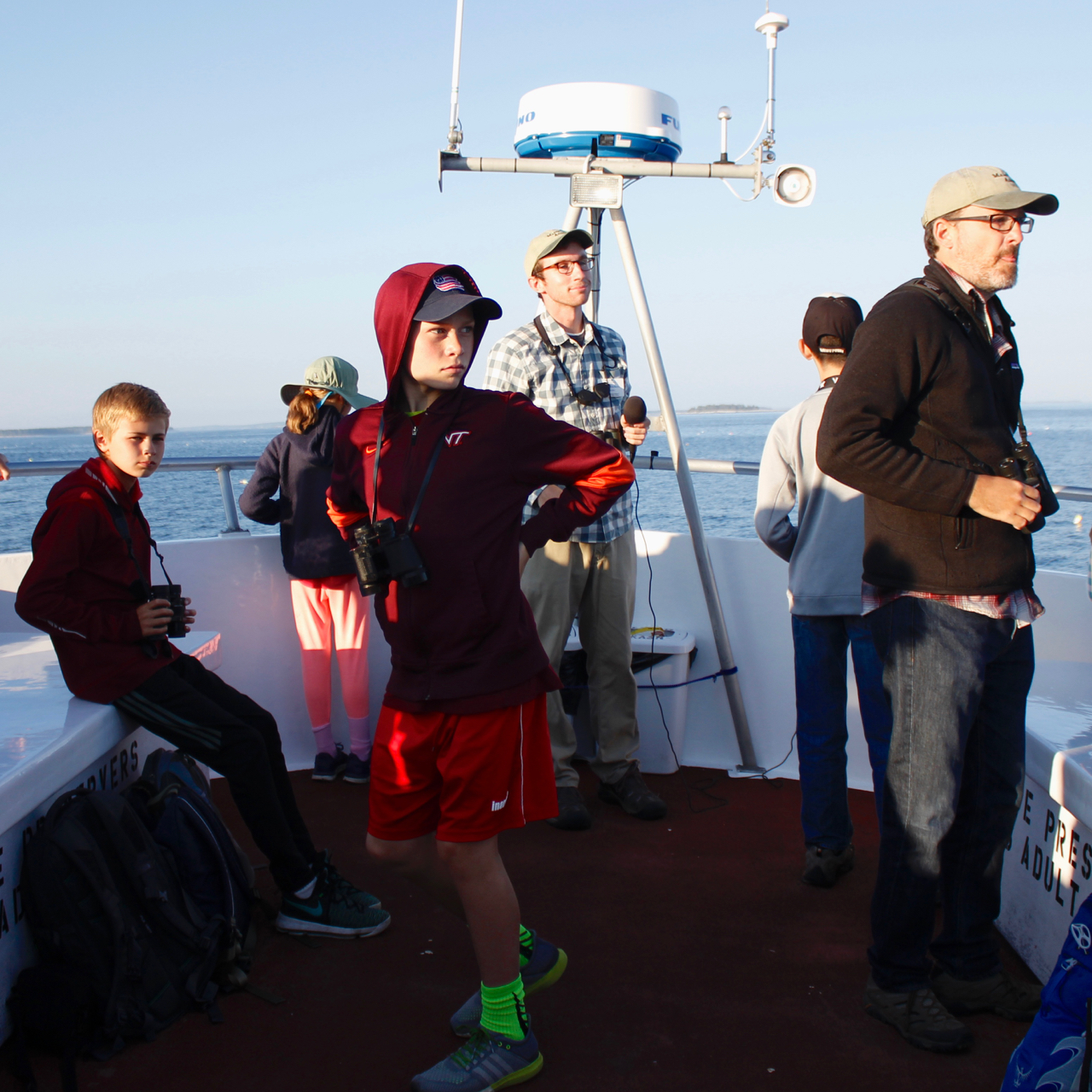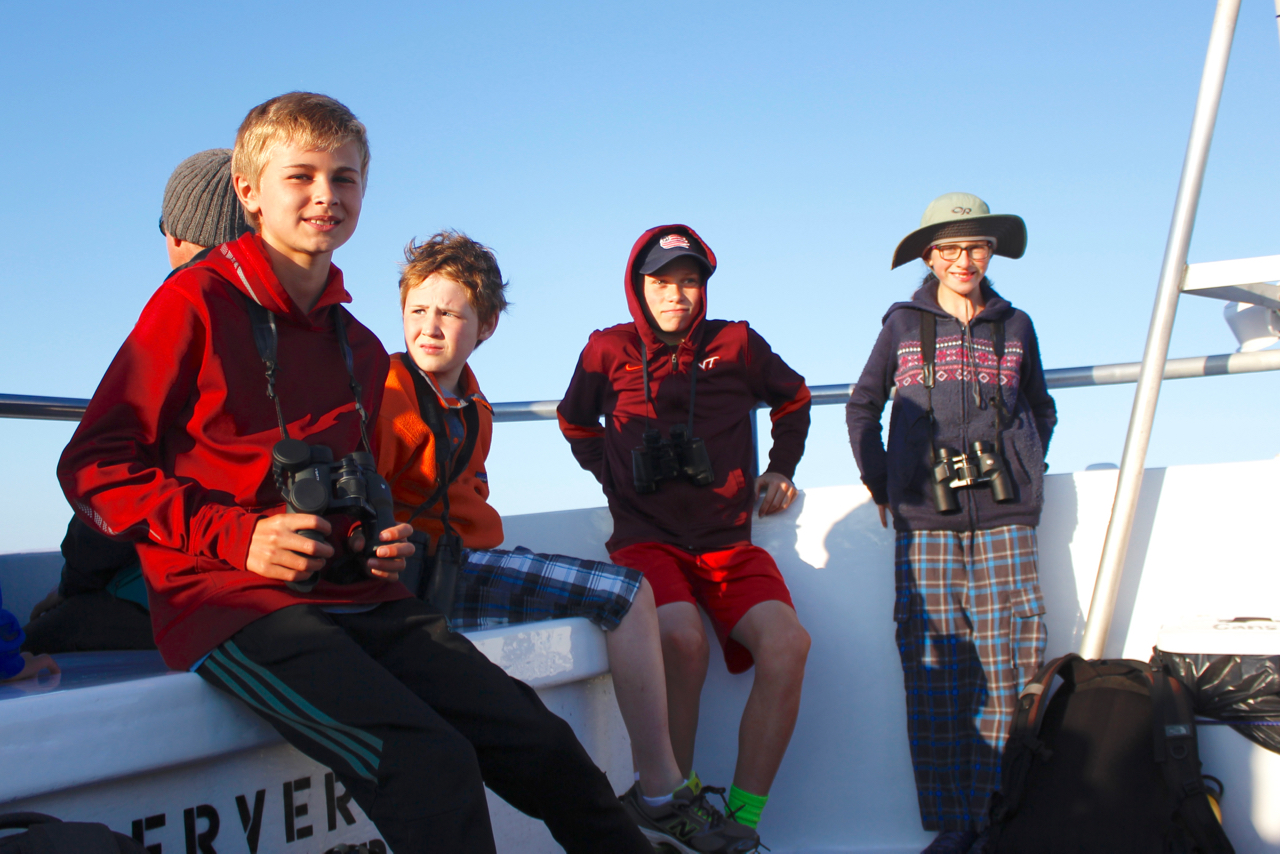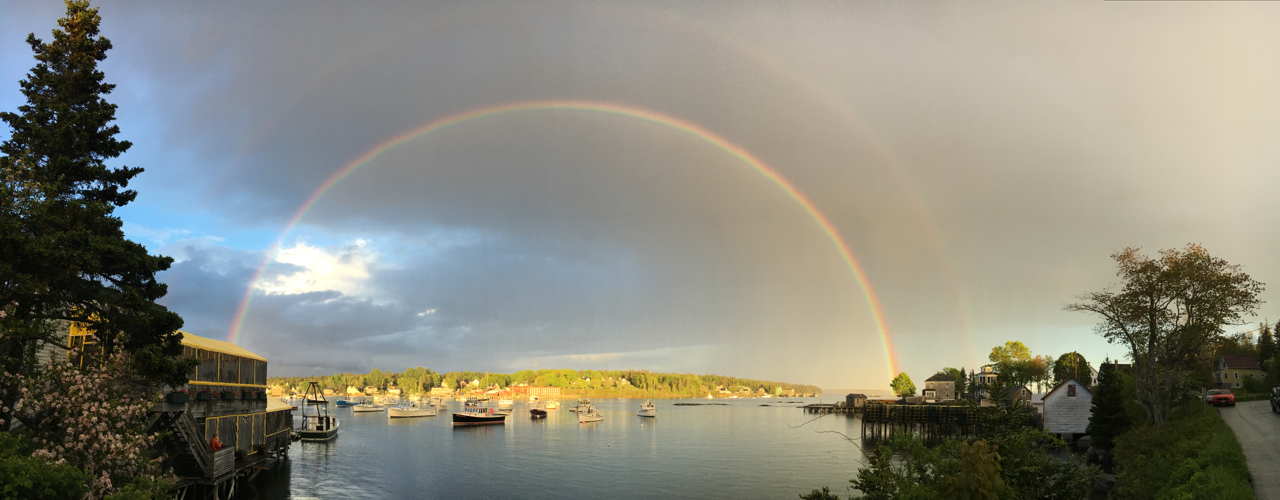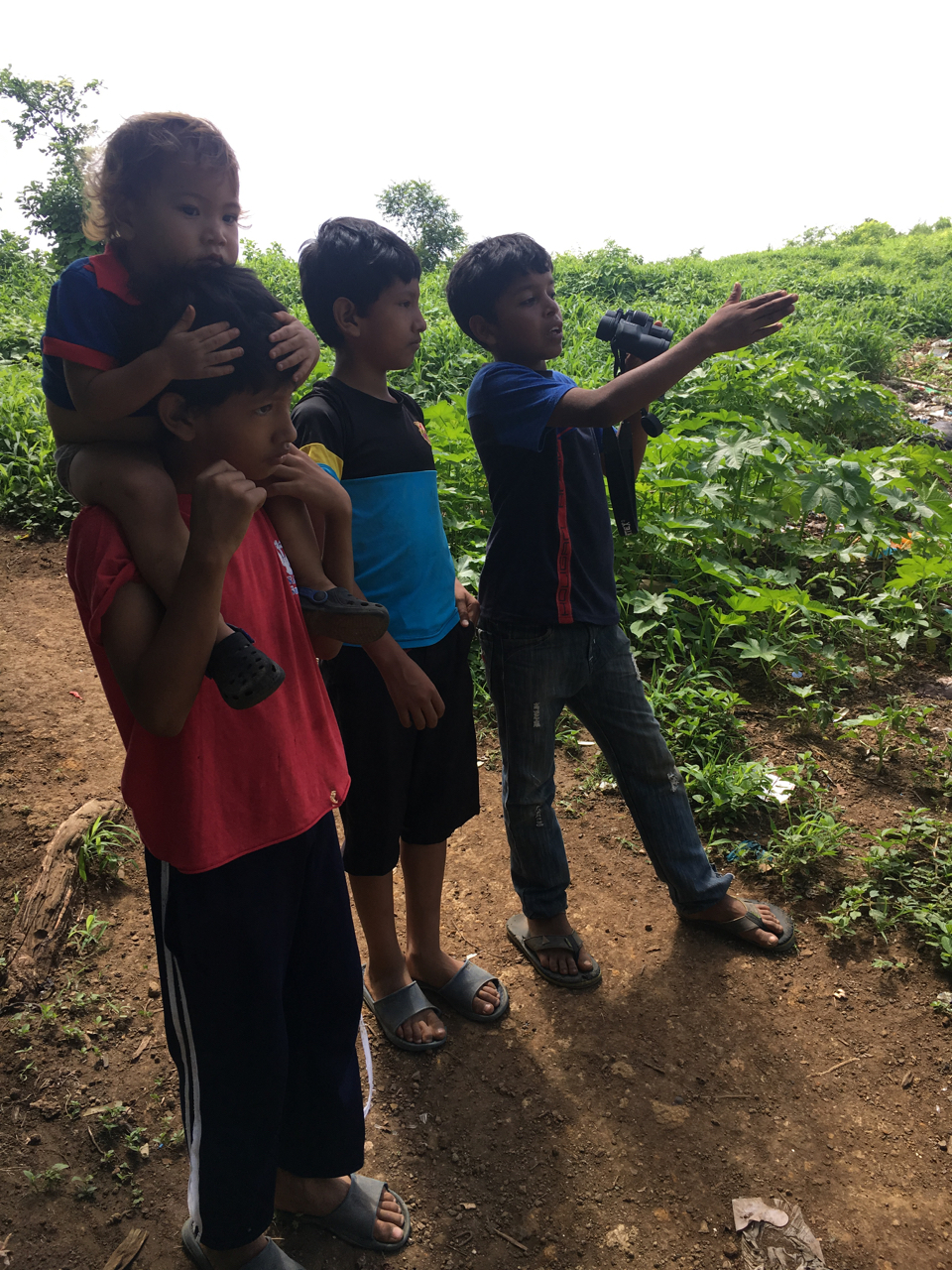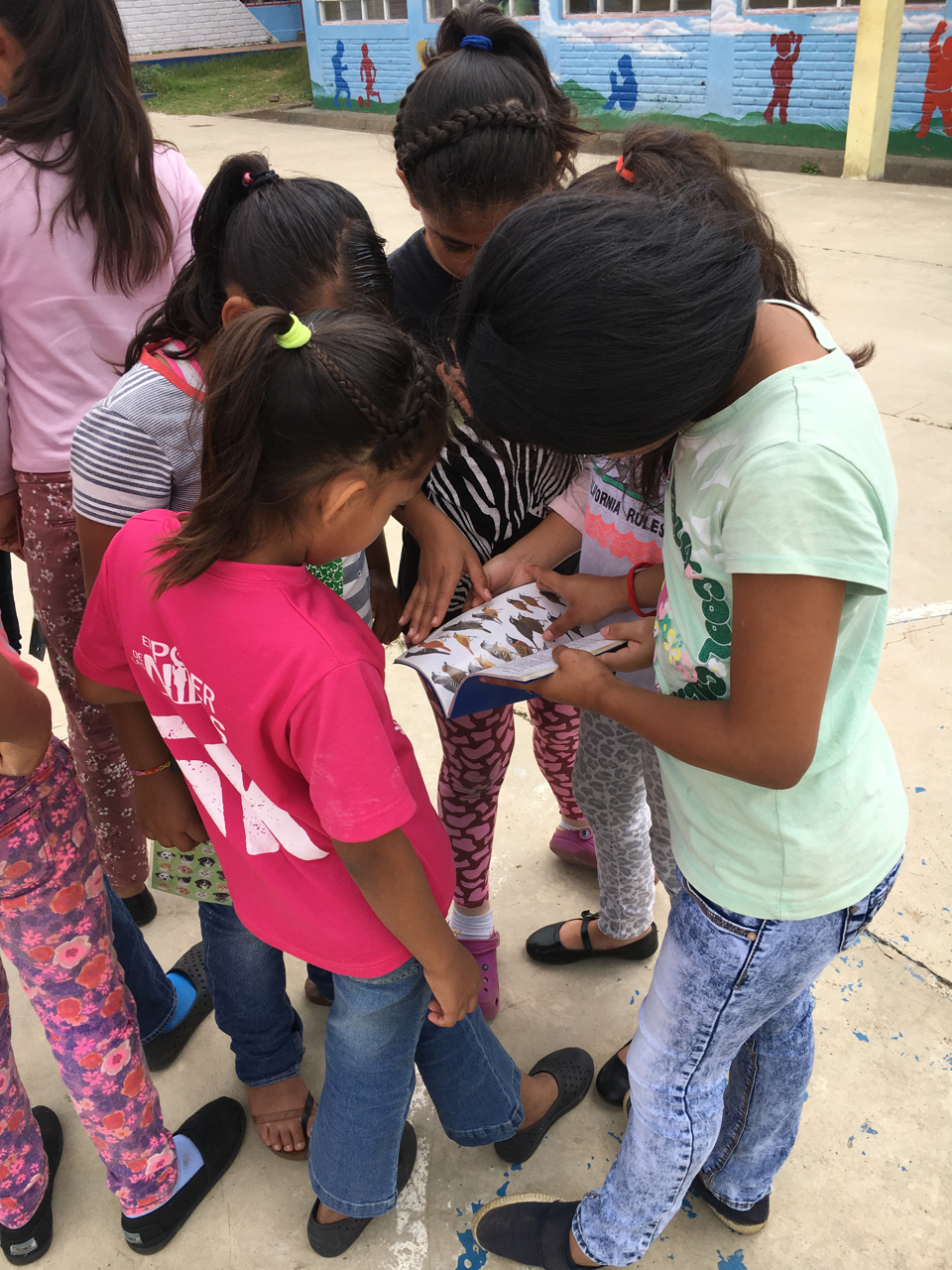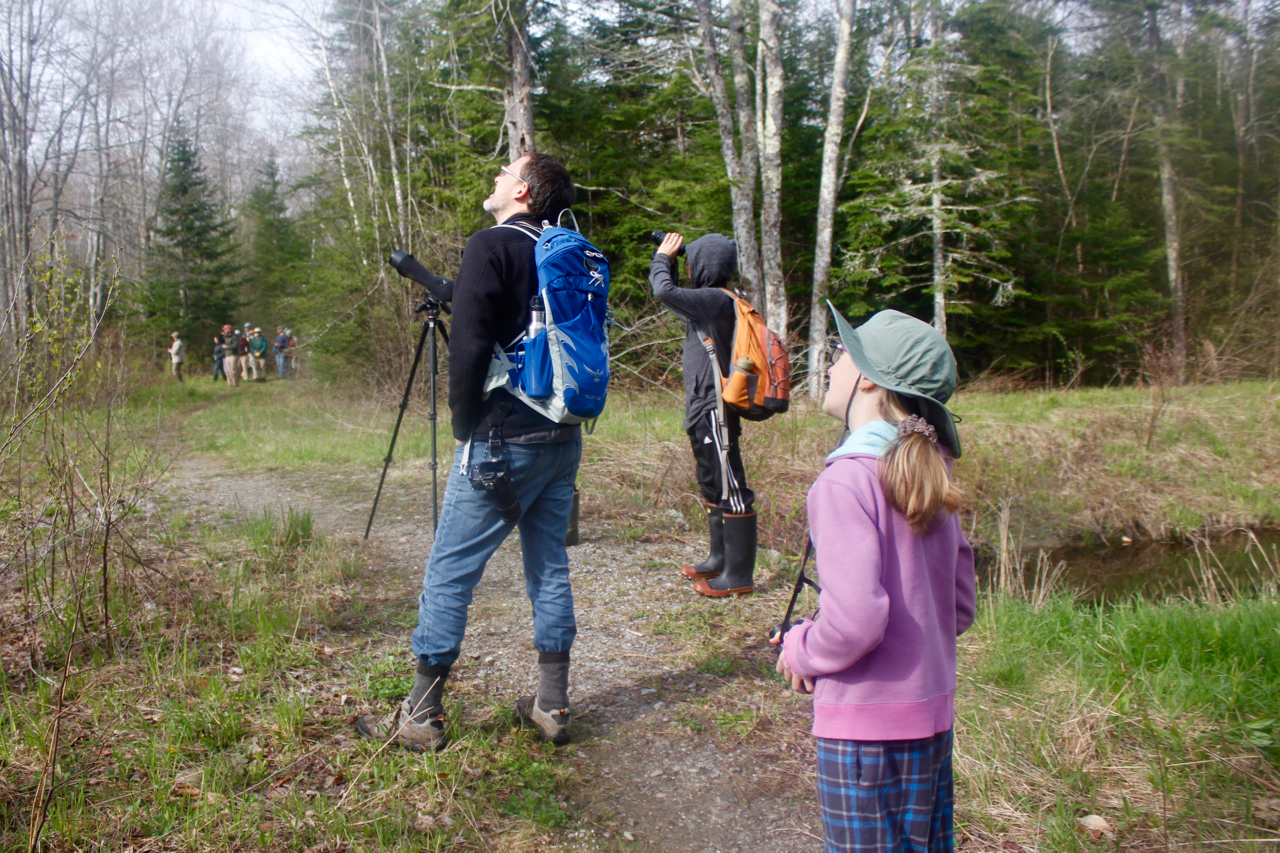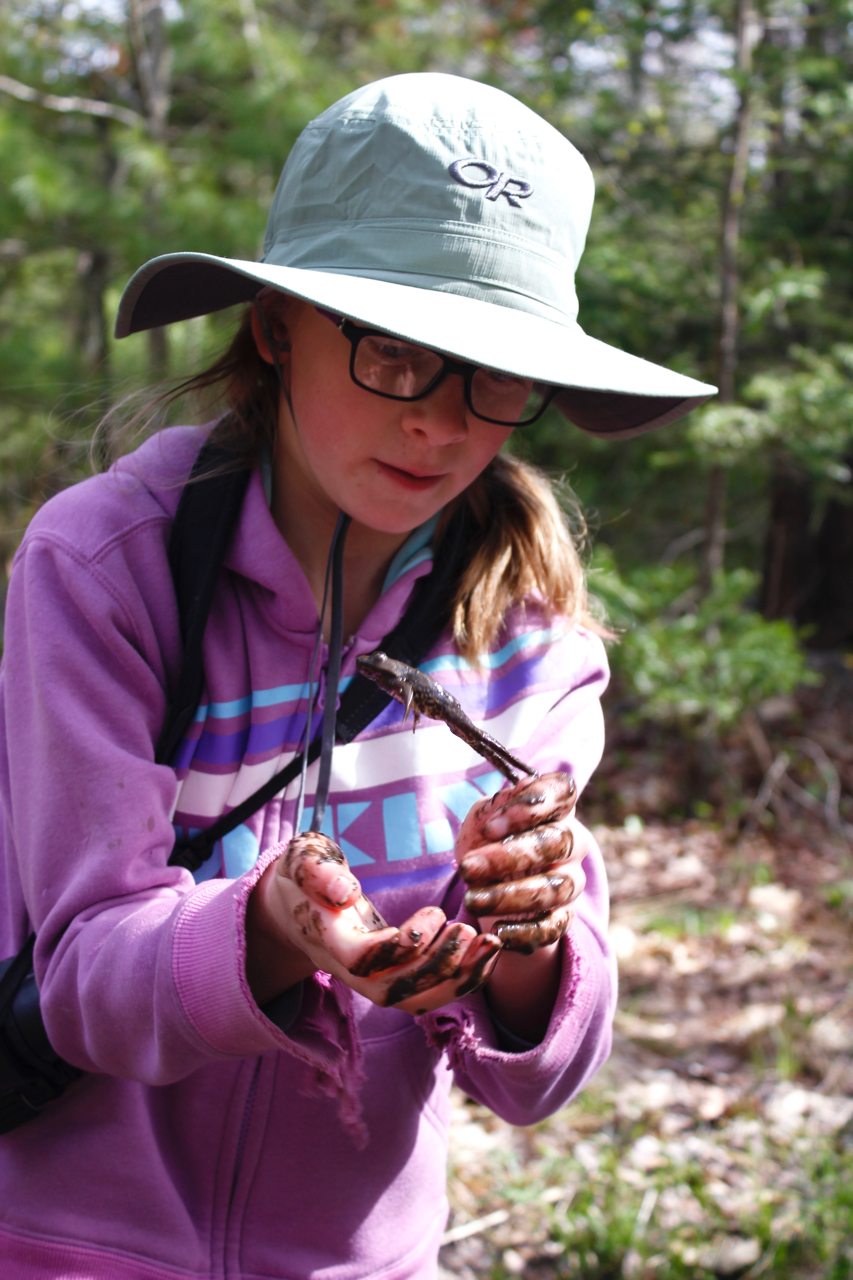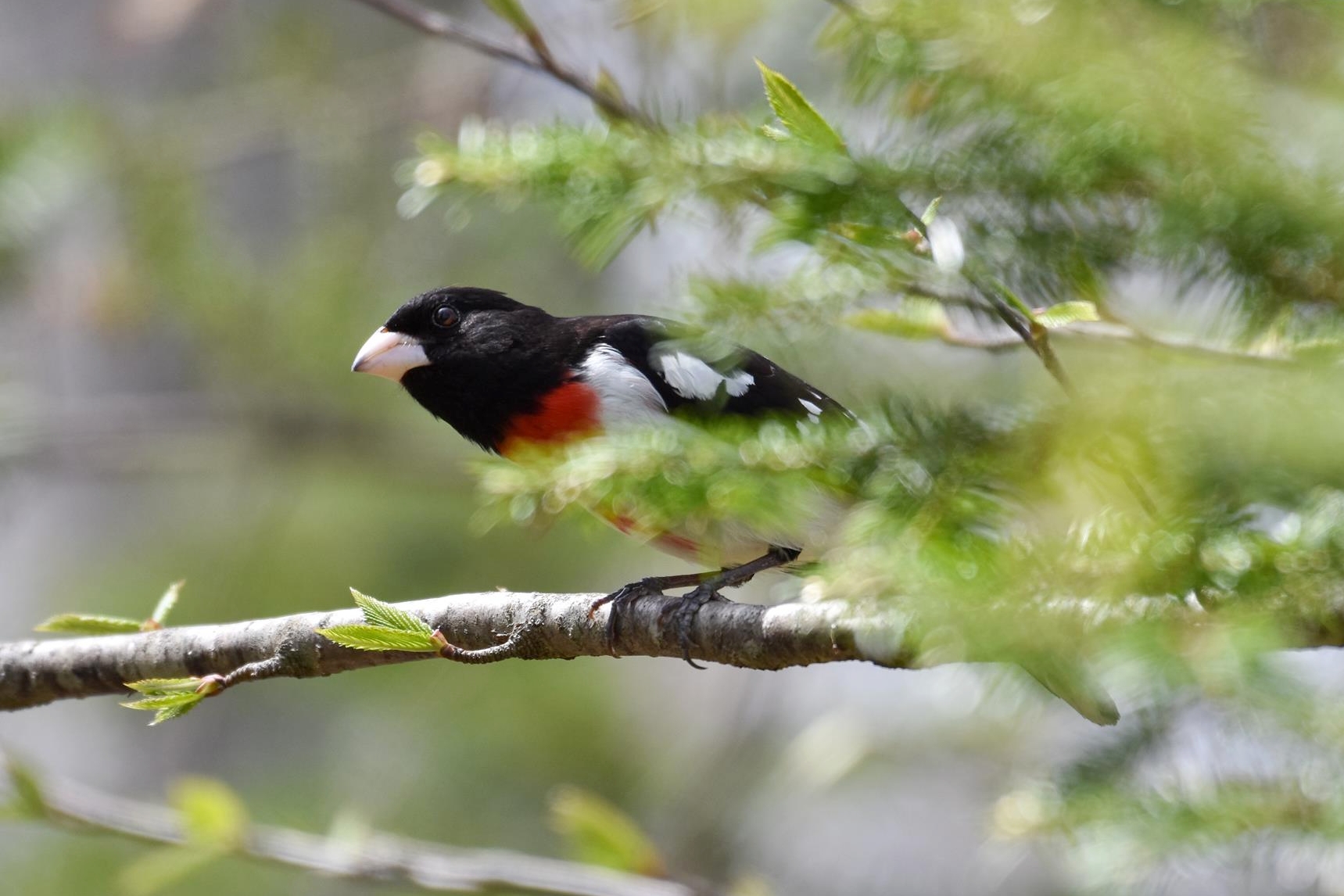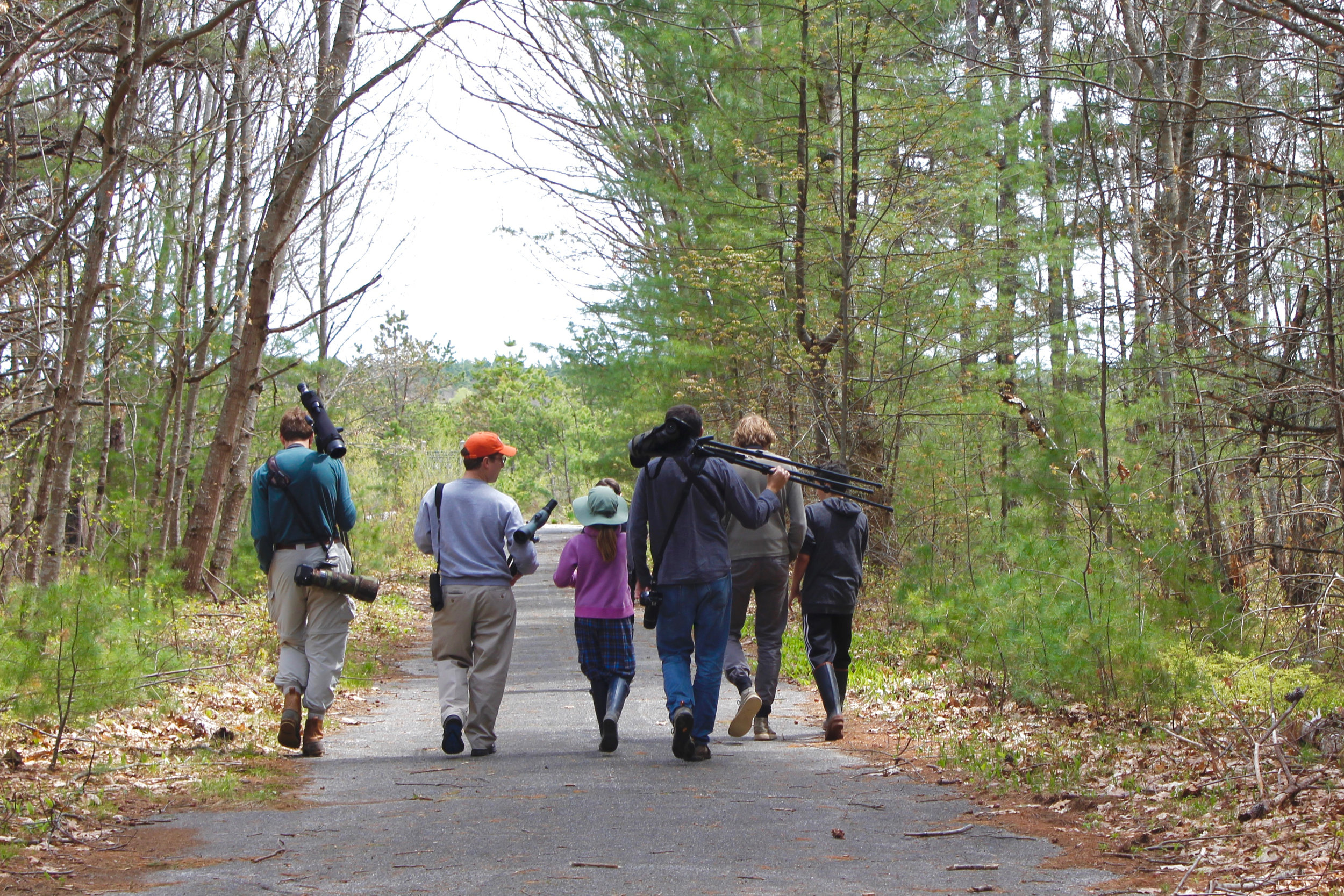By Lena Moser
Today five young birders headed out onto the sand and waves to look for migrating shorebirds. We are proud to admit that we did not go home empty-handed! (Or is it "empty-binoculared"?)
Highlights included Sanderlings, Dunlin, Black-bellied Plovers, and a Short-billed Dowitcher on the Basket Island causeway at Hills Beach. A female Belted Kingfisher also put on a show, hovering in place for long periods of time as she honed in on the fish she wanted to catch in the tide pools below. Local birder Pat Sanborn pointed out a raft of nearby Green-winged Teal. We loved seeing their bright green specula (colorful secondary feathers) glistening in the sun. When we were done birding at Hills Beach, we relaxed and ate our lunches in the Park in the Pines as Cedar Waxwings serenaded us with their high-pitched calls. After the brief rest, though, we were eager to continue our shorebirding adventure.
Next, we headed down Mile Stretch Road to South Point Sanctuary, where we were greeted by a flock of over 7 Black-and-white Warblers, a Magnolia Warbler, Red-eyed Vireo, American Redstart, and a loudly-calling Northern Flicker. Coming off the boardwalk, onto the beach, we scanned the rack of seaweeds for peeps and were grateful to birder Richard for helping us find the Western Sandpiper: a rare visitor that was a lifer for all the young birders! Of course, that made everyone's day.
Fortunes Rocks Beach also rewarded us with great looks at a White-rumped Sandpiper and a couple of Laughing Gulls. Unfortunately, we also saw an injured Herring Gull with a broken/bloody wing... the sight of which made us all a bit sad because we knew this bird wasn't going to make it very long. Micah Pietraho spotted a Red-necked Grebe with his sharp eyes, and we had to work hard to get good looks at that bird because it preferred diving to swimming. We couldn't believe how many Northern Gannets were out on the ocean... we counted over 30, including a couple that flew in very close to shore. One individual floated on the water for a while, affording excellent scope views. A flock of White-winged Scoters flew past us quickly, but the large rafts of Common Eiders floated about lazily and were easy to enjoy.
Before calling it a day, we stopped at Great Pond, where we saw a young Black-crowned Night-Heron and a sleeping male Wood Duck, who presented quite the identification puzzle at first. A good-sized flock of Snowy Egrets showed off their plumes as they preened in the trees, and a Spotted Sandpiper wobbled along the exposed mud bank. We found some ripe blackberries nearby and enjoyed a sweet treat to boot!
What a fabulous day of birding it was. Conclusion: shorebirding is awesome! Let's do everything we can to protect and care for our shorebirds, whose habitats and ways of living are continually under threat from habitat destruction, pollution, dogs-off-leash, climate change, and hunting. We know there is hope for the future, especially with more educated and caring young birders out and about ;)










